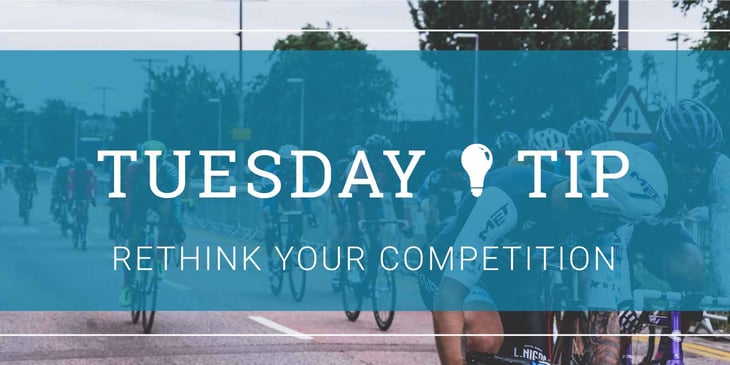
They say a little competition is healthy. You've likely witnessed this for yourself since grade school—if a classmate was running faster than you in gym class, maybe you pushed a little harder to keep up. However, rather than focusing all your marketing energy on trying to outrun your competitors, try this week's tip: focus on your actual competition—the concerns of your audience.
Who is your marketing competitor?
The Harvard Business Review recently posted an article that points out just how much we obsess over the wrong competition. The writer argues that "smart" leaders and organizations go beyond seeing their competition as people selling something similar to them:
Your competition is any and every obstacle your customers encounter along their journeys to solving the human, high-level problems your company exists to solve. – Tara-Nicholle Nelson, HBR
The idea is, once you stop expending so much energy following your competitors and trying to do better than them, you have more time to devote to resolving the problems your audience has. This commitment will not only result in more solutions, but will attract your target audience as they recognize your products' or services' values.
Case in point:
Tara-Nicholle Nelson was formerly a lead marketer at MyFitnessPal. Through the post she illustrates how this renewed focus on resolving client issues, expedited them to the top of the fitness app list. Their focus on audience over competition changed the way they thought about their overall business strategy.
Actual competition: Biology (people want fatty, sugary foods), mindless eating, the millions of ads promoting unhealthy food choices, the expense of healthy foods
Renewed focus: "Selling a transformation" – they focused on helping a user go from one point to another rather than on selling their product (or more specifically their app)
Broadened audience: It's not just about the users that follow you or visit your website. It's all the people who have a problem that you're helping resolve. In their case, it was anyone trying to be healthier, giving them a lot of untapped users.
More specific, useful research: Rather than studying what competitors are doing, you can spend more time with customer research. As Nelson points out, this doesn't mean tracking the typical customer journey from not knowing your product to purchasing it. Instead, this means understanding where they are at during point A in their journey all the way through to the final stop—in this case, from unhealthy to healthy.
As a result, MyFitnessPal came to some game-changing conclusions. They helped users track the health consequences of their packaged foods through an in-app bar code scanner. They created a database of nutrition so consumers could understand their food intake. The app includes social features to help create accountability and support between users.
When should you check out that other competition?
This post is not encouraging you to put on your blinders and overlooking your marketing competitors. In fact, in doing so, you will be missing out on what your audience witnesses. You need to know what other products are available to your audience, where they see them and how much these actually help them. Understand what else is out there at a basic level, so you can think like your audience and meet their needs. Just don't get distracted by this awareness.
Read the full post by Nelson, "Obsess Over You Customers, Not Your Rivals" and follow our weekly tips by subscribing below.